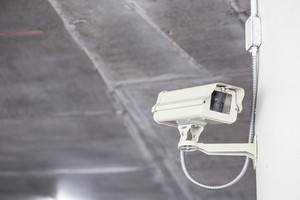The New Currency for Small Businesses: TRUST

Gaining trust requires thinking about the feelings you want to create for consumers and removing potential bottlenecks in the customer journey.
One thing is becoming certain in the pandemic era—trust and transparency have never been more important.
Over the past three months, Brightpearl has surveyed over 2,000 U.S. consumers to understand better their priorities and concerns as the pandemic evolves, and we’ve discovered a new consumer emerging from this period of uncertainty that places a far greater priority on trust than ever before. We have found that in a post-pandemic world, trust is the new consumer currency.
However, our evidence suggests that retailers fail to comprehend this changing customer complexity, leading to a widening gap between expectation and delivery and increasing numbers of unhappy customers who are losing faith in the online experience.
Why is that?
Well, supercharged by COVID-19, more than half of American consumers have increased their online spending—with a greatly increased choice of e-tailers and brands to choose from. However, not all these new online brands have been created equal. A deeper look into the data reveals that the increase in upstart ecommerce retailers has had a direct bearing on falling service standards—particularly after the buy button, resulting in the erosion of customer trust in reliable customer experience.
Indeed, since the start of the pandemic, 61% of consumers have experienced problems buying from brands online—often relating to late or non-delivery. With that in mind, it becomes easy to see why more than half (51%) of shoppers now say trust is their primary motivator for selecting who to shop with—topping other considerations like brand name and even price. This is a real step change and highlights how consumers’ experiences with COVID-19 are redefining how they behave and engage with brands based on the values they prioritize.
As the economic and social crisis peaks in early 2021, consumers will have little patience or acceptance for companies who fail to deliver on expectations or cannot comprehend changing customer complexities around trust. It’s now time for brands to focus on establishing—or re-establishing—trust with their customer base.
Outcome failure is a trust killer
Before digging deeper into how to re-establish trust, it is essential to consider how we judge trust in the first place. In How Humans Judge Machines, Cesar Hidalgo states that “people judge humans by their intentions and machines by the outcome.” A business is a machine, constituent parts performing a task; therefore, proof of outcome is key to gaining trust among potential customers.
There’s a real risk of outcome failure for online brands from not having a solid retail infrastructure in place, especially in a climate of greater competition and heightened demand. For example, our study shows that 77% of poor experiences are directly related to problems after the buy button, such as canceled purchases, lack of delivery updates or items not arriving on time or at all.
Without the tools to expertly manage operational complexities that lie beyond the buy button, from delivery and returns to inventory management and customer communications, a business can quickly run into trouble, leading to mis-execution and poor consumer experience.
When talking about the importance of slick operations to building trust in the new world, Fairfax & Favour’s head of operations, Rob Cooper, hits the nail on the head when he says: “Customers, even during a pandemic, rightly expect an experience that matches their expectations. If they don’t get that the first time, because you’re not quick enough, they probably aren’t coming back.”
As Rob alludes to, one of the most damaging things a brand can do is promise a service that they can’t deliver. As consumers, most of us can relate to the feelings of frustration that delays or errors with an online order can bring—and more than two-thirds of us won’t return to a brand we’ve previously had a bad experience with, according to our Brightpearl research.
Additionally, the Future Consumer Index reports that 44% of consumers will prioritize brands they’ve purchased from before within the next year. Companies can’t afford to ignore the importance of trust or, worse, utilize weak setups that lead to the long-term erosion of trust in their brand.
Ownership equals trust
Re-establishing trust with customers is simple, in theory. It requires total ownership of the entire customer experience. Unfortunately, our evidence suggests that many retail businesses are not treating the post-purchase journey with the same respect that they treat pre-purchase—when they wanted to capture the sale.
By not prioritizing post-purchase touchpoints, some firms are both eroding trust in their brand—and online shopping in general. For example, 42% of shoppers—almost half—say that unreliable delivery has lessened their trust in online shopping since the coronavirus crisis.
Savvy retailers will now recognize that if trust is the new consumer currency, then they should look to cash in. Doing so requires ownership of all ends of the buying journey—thinking about the feelings you want to create for customers every step along the way and removing any potential bottlenecks within the pre-and post-purchase customer journey, from the website experience to delivery and returns.
The post-pandemic future offers brands an opportunity, but nobody is buying if they don’t trust you to deliver on expectations. Retailers and brands that develop and communicate trust as a core business pillar and have the right infrastructure in place to deliver optimal end-to-end shopping experiences will be best placed for success.
Remember, though, that ownership is the key to building trust—and trust breeds long-term loyalty—a prerequisite for success in this troubled climate.
Brightpearl provides omnichannel retail management software for orders, inventory, financials, point of sale and customer relationship management.
Author: Derek O’Carroll, CEO at Brightpearl
VIA: Digital Commerce 360




